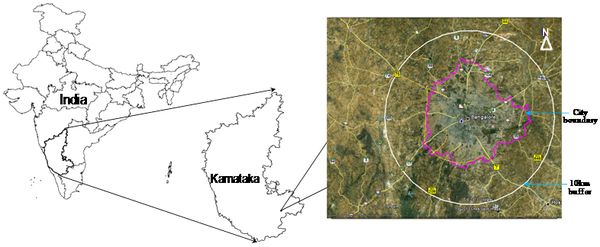1Energy and Wetlands Research Group, Centre for Ecological Sciences [CES],
2Centre for Sustainable Technologies, 3Centre for infrastructure, Sustainable Transportation and Urban Planning (CiSTUP), Indian Institute of Science, Bangalore – 560012, India. *Corresponding author: cestvr@ces.iisc.ac.in
Citation : Ramachandra, T.V.; Shwetmala, "Groundwater quality impairment due to mismanagement of biodegradable waste," Global Humanitarian Technology Conference: South Asia Satellite (GHTC-SAS), 2013 IEEE , vol., no., pp.223,227, 23-24 Aug. 2013.
doi: 10.1109/GHTC-SAS.2013.6629920.
|
||||||||||||||||||


